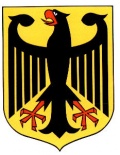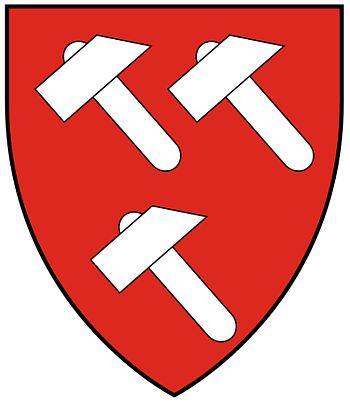Hammerstein (am Rhein): Difference between revisions
Jump to navigation
Jump to search
Knorrepoes (talk | contribs) m (Text replacement - "{{media}} Literature : " to "Literature : {{media}} ") |
Knorrepoes (talk | contribs) m (Text replacement - "Literature :" to "'''Literature''':") |
||
| Line 25: | Line 25: | ||
The arms show three canting hammers, which were derived from the arms of the Counts of Hammerstein, to whom the village belonged in medieval times. The colours are those of the State of Trier, as the village was part of Trier. | The arms show three canting hammers, which were derived from the arms of the Counts of Hammerstein, to whom the village belonged in medieval times. The colours are those of the State of Trier, as the village was part of Trier. | ||
[[Civic Heraldry Literature - Germany|Literature]] : | [[Civic Heraldry Literature - Germany|'''Literature''']]: | ||
{{media}} | {{media}} | ||
Revision as of 11:50, 9 September 2022
This page is part of the German heraldry portal Deutsche Wappensammlung |
Heraldry of the World |
|
German heraldry:
|
Selected collector's items from Germany:
|
HAMMERSTEIN
State : Rheinland-Pfalz
District (Kreis) : Neuwied
Verbandsgemeinde : Verbandsgemeinde Bad Hönningen
| German |
In Rot drei schräggestellte, 2:1 angeordnete silberne Hämmer. |
| English | (am Rhein) No blazon/translation known. Please click here to send your (heraldic !) blazon or translation |
Origin/meaning
The arms were adopted in 1946.
The arms show three canting hammers, which were derived from the arms of the Counts of Hammerstein, to whom the village belonged in medieval times. The colours are those of the State of Trier, as the village was part of Trier.
Contact and Support
Partners:
Your logo here ?
Contact us
© since 1995, Heraldry of the World, Ralf Hartemink 
Index of the site












